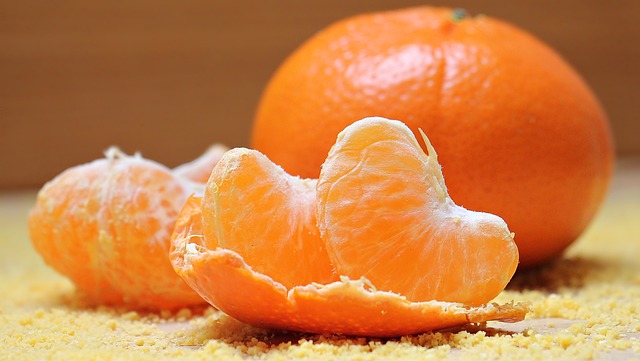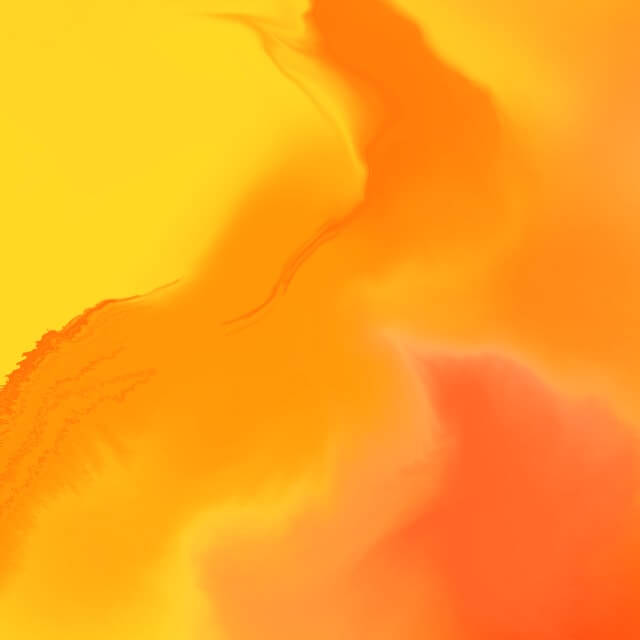
Table of Contents
Orange, like green, is a color that’s commonly found in nature. It’s the color of vegetables, flowers, citrus fruits, fire and vivid sunsets and is the only color on the visible light spectrum that’s named after an object. It’s a hot and vibrant color that comes in many shades and is either loved or detested by most people.
In this article, we’ll be taking a closer look at the history of the polarizing color orange, what it symbolizes and how it’s used in the modern world.
Origin and History of the Color Orange

The history of the color orange is fascinating, stretching back centuries. The name for the color comes from the fruit, which the French introduced to the world in the 1300s, but it wasn’t used to describe the color until about 200 years later.
In Ancient Egypt, orange was important in tomb paintings. The Egyptians used a mineral called realgar for orange pigment, a practice that spread across the Middle East. They also used orpiment, found in volcanic fumaroles, for making orange color. Despite being toxic, orpiment was popular in Egypt for various uses, including as poison, until the 19th century.
In China, people ground orpiment to make orange pigments. Alchemists loved its deep yellow-orange color for trying to make gold, and it was also used against snakes and for medicine.
In early 15th century Europe, people knew about orange but didn’t have a specific name for it, often calling it ‘yellow-red’ or ‘saffron’. The arrival of orange trees from Asia to Europe led to the color being named after the fruit.
By the late 18th and 19th centuries, scientists were making synthetic pigments. French scientist Louis Vauquelin discovered lead chromate, leading to ‘chrome orange’ and other synthetic colors. Orange became popular with history painters and the Pre-Raphaelite movement. Impressionists like Paul Cezanne made orange shades using red, yellow, and ochre, while Toulouse-Lautrec used orange to portray fun and festivities.
In the 20th and 21st centuries, orange’s high visibility made it popular for safety gear. During World War II, US Navy pilots wore orange life jackets, and this continued after the war on ships and aircraft. Road workers and cyclists also wear orange to be seen easily by drivers.
What Does Orange Symbolize?

The color orange, a blend of red’s passion and yellow’s joy, symbolizes a range of meanings across different cultures and contexts:
1. Energy and Enthusiasm
Orange is warm and vibrant, often symbolizing energy and enthusiasm. It’s like the color of sunsets and flames, full of life and action. Orange brings excitement and a lively spirit to places that need fun and energy. It’s great for making designs and spaces feel more active and full of life.
2. Creativity and Expression
Orange stands out as a bold color, linked to creativity and artistic expression. It sparks unique thinking and imagination, making it popular among artists. Orange pushes for open-mindedness and new ideas, often found in creative spaces. It helps enhance creativity and encourages people to see things differently.
3. Joy and Happiness
Like yellow, orange represents happiness and optimism. Its cheerful color lifts spirits and makes places feel happy and welcoming. It’s perfect for areas where a fun, warm, and friendly atmosphere is needed. Orange is believed to make people feel happier, so it’s used in places meant for relaxing and having fun.
4. Social Communication
Orange is great for encouraging conversation and socializing. It’s outgoing and welcoming, often used in places where people come together, like living rooms or social areas. Orange promotes open communication and a sense of community.
5. Adventure and Risk-Taking
Orange embodies adventure and the willingness to take risks. It’s about being bold and spontaneous, often linked to adventurous activities. In fashion and design, orange shows confidence and bravery, perfect for those who love challenges.
6. Change and Transition
Orange symbolizes change and transition, like autumn leaves changing color. It stands for life’s constant changes, encouraging flexibility and openness to new beginnings. It reminds us of life’s ongoing evolution.
7. Cultural Significance
Orange means different things in different cultures. In Hinduism, it’s sacred and spiritual, representing fire and purity. It’s used in religious events and signifies spiritual enlightenment. In Western cultures, it’s linked to Halloween and harvest, symbolizing abundance and life’s cycles.
8. Health and Vitality
Orange, the color of many healthy fruits and vegetables, represents good health and vitality. It suggests a diet full of important nutrients, especially Vitamin C. In health and wellness, orange conveys energy and a vibrant, healthy lifestyle.
Symbolism of Orange in Different Cultures

Orange is heavy with symbolism, with differing perspectives based on culture. Here’s what the color symbolizes in various cultures around the world.
In Western countries, orange represents creativity, enthusiasm, and warmth. It’s seen as a joyful and energetic color, often used in celebrations and happy events.
In Hinduism and Indian culture, orange is very spiritual. It’s the color of the sacred spice, saffron, and is commonly worn by monks and spiritual leaders. This color stands for giving up worldly things, spirituality, and seeking enlightenment. It symbolizes purity and soul transformation. During festivals like Diwali and Navratri, orange is a key color in decorations and clothes, representing spiritual richness and change.
In the Netherlands, orange is a color of national pride, linked to the Dutch royal family. It stands for unity and national identity, especially during national events and sports.
In Buddhist traditions, orange is sacred and lucky. Monks wear orange robes, which show humility and a simple life. This color is about letting go of material things and focusing on spiritual life.
In China and Japan, orange means happiness, love, and health. It’s a lucky color, used in cultural celebrations and decorations to bring good fortune and well-being.
Personality Color Orange

Loving the color orange says a lot about your lively personality. You show energy and enthusiasm, spreading warmth and positivity wherever you go. Orange shows your creative side and eagerness to try new things. You’re adventurous, not afraid to step out of your comfort zone. Often, you’re the center of attention, adding joy and excitement to your group of friends.
Your choice of orange also shows you’re an optimist. You always look on the bright side, even in tough times. Your positive attitude lifts everyone’s spirits. But your love for orange means more than just being upbeat. It shows you value deep connections and good conversations. You’re great at talking to people and shine in situations where you can share thoughts and experiences.
Your love for orange makes you come across as dynamic, full of energy, and friendly. You’re attracted not just to the color’s brightness but also to what it represents: a life full of enthusiasm, openness, and constant happiness.
Positive and Negative Aspects of the Color Orange

Orange, a bright and lively color, brings both good and bad effects. On the plus side, orange is full of energy and warmth. It boosts activity, enthusiasm, and creativity, often making people feel happy and full of life. It’s great for encouraging people to talk and be open, supporting friendliness and an outgoing nature. Orange also links to optimism, giving a positive vibe and inspiring a sense of adventure and willingness to take risks.
But orange can also be too much for some people. In large amounts or really bright tones, it can feel overwhelming and intense. This can make people feel frustrated or annoyed, especially when they need to focus or stay calm.
Sometimes, orange might seem too playful or not serious enough, which can be a problem in more serious situations. Also, its very brightness, while attractive, can be distracting, not ideal for places where you need to concentrate or want a quieter mood.
In the end, how orange affects people really depends on where and how you use it. While it can be energizing and uplifting, it’s important to think about how intense it is and if it fits the situation to make the most of its good qualities.
The Use of Orange in Fashion and Jewelry
Designers use orange to make their collections lively and full of energy. This color can be a soft pastel or a bright neon, so it works for many different styles. Orange is really popular in the sunny and happy seasons of spring and summer. You’ll see it in all kinds of clothes, from casual t-shirts and sundresses to fancy gowns for the evening.
Designers also like to mix orange with colors that stand out against it, like blue, black, or white, for a look that catches your eye. Accessories in orange, such as scarves, belts, hats, and bags, make an outfit more exciting.
In the world of jewelry, orange gemstones like carnelian, fire opal, and orange sapphire really shine. These gems are used in various jewelry pieces, from earrings and necklaces to bracelets and rings. They’re often set with warm metals like gold or rose gold. Amber, with its natural orange color, is also a favorite for jewelry because it looks beautiful and has a rich color.
Choosing to wear orange in your clothes or jewelry shows you’re confident and like to be noticed. It’s a color for people who enjoy being playful and creative. Whether it’s a bright orange dress or a more subtle piece of orange jewelry, using this color shows that you’re full of energy, creativity, and a love for adventure.
Wrapping Up
Although it’s found everywhere in nature, orange isn’t most people’s first choice when it comes to picking colors. While the symbolism of the hue changes according to culture and religion, it remains a beautiful and important color used extensively in the contemporary world.








